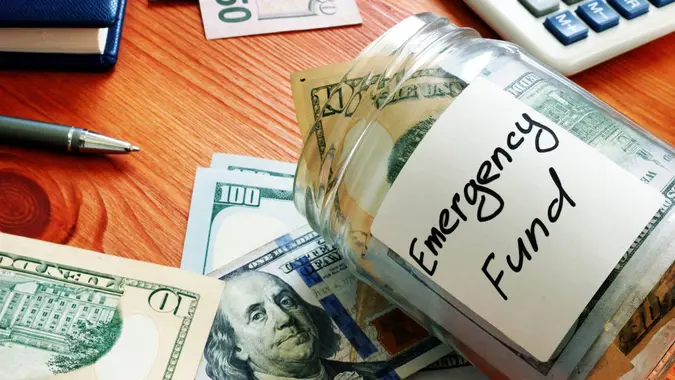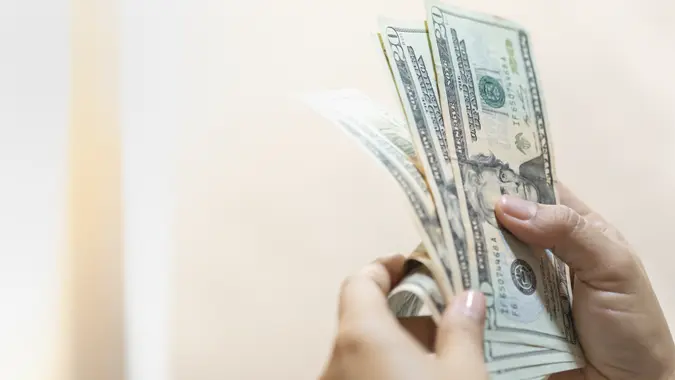Stimulus Checks Are Gone. Is Your Emergency Fund Still Empty? 3 Ways to Build It Up Again

Commitment to Our Readers
GOBankingRates' editorial team is committed to bringing you unbiased reviews and information. We use data-driven methodologies to evaluate financial products and services - our reviews and ratings are not influenced by advertisers. You can read more about our editorial guidelines and our products and services review methodology.

20 Years
Helping You Live Richer

Reviewed
by Experts

Trusted by
Millions of Readers
Remember those stimulus checks? For a while, they gave many of us a little extra breathing room –whether that meant catching up on bills, padding our savings or splurging just a bit.
But now that those payments are a thing of the past, it’s easy to feel the pinch if your emergency fund still hasn’t gotten off the ground.
A U.S. News & World Report survey shows that 42% of Americans don’t have an emergency fund.
Here’s the thing: Life happens — cars break down, appliances quit and unexpected expenses always seem to pop up at the worst times. Without a financial cushion, even a small surprise can send your budget into chaos. That’s why rebuilding (or finally starting) your emergency fund is so important.
Here are a few simple ways to grow your emergency fund again.
Treat It as a Mandatory Expense
According to Rami Sneineh, vice president and licensed insurance producer at Insurance Navy, restoring an emergency fund is not an instantaneous process, and the most neglected approach is to treat it as a mandatory expense every month just like you do with rent or utilities.
Setting aside a certain number of dollars, say, $150 or $200, per month into a different account (savings account) automatically means that progress is being made and no decisions are needed to be made regarding it.
He said this will make it predictable and you won’t be tempted to spend that money elsewhere.
Monetize Current Assets
Another strategy Sneineh said is usually overlooked is the practice of monetizing current assets.
“Lots of homes have equipment lying idle, electronics or even an old car. Reselling such items and contributing all the dollars to the fund will yield an instantaneous jump of $500 to $1,000, reducing the period required to get to a significant cushion,” he explained.
Sneineh noted that although the most frequent recommendations are to take up side jobs or reduce how often you go out to restaurants, speeding up the process by using intentional sales of dormant assets provide a more concrete beginning and provide momentum.
Don’t Get Overwhelmed — Build Momentum
“Don’t get overwhelmed by the idea of saving three to six months of expenses right away,” said Devin Miller, co-founder of SecureSave.
He recommended starting by building momentum with just $20 to $40 each paycheck into a dedicated emergency savings account, ideally automated through your employer if they offer ESAs.
“Our research shows that most emergencies are under $200, things like a car repair or a medical bill, so even a few hundred dollars makes a big difference in avoiding debt and stress,” Miller said.
Once you see progress, it’s easier to grow that and save over time.
More From GOBankingRates
 Written by
Written by  Edited by
Edited by 

























